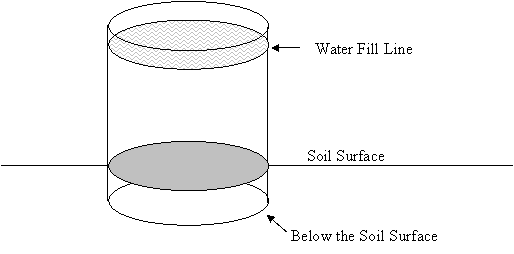To measure how fast water percolates into the soil, you need to measure the time it takes for a specific amount of water to soak into a specific area of soil. The easiest way to do this is to get a length of cylindrical pipe that is sharp enough to push (or hammer) into the soil at one end. Mark it with two lines – one is the line to which you insert it into the soil, and the other is the line to which you fill the water. It should go deep enough into the soil that the water does not simply spill out to the sides. When ready, push (or hammer) it into the soil, fill it with water up to the water line, and time how long it takes for the water to disappear into the soil. If you only want to compare the percolation rate at two sites, you can simply compare the times. Be aware that the percolation rate will be different if the soil begins in a dry state than if it is already wet, so for an accurate comparison of two sites, begin with the soil in the same state of wetness.
If you want an exact percolation rate, you need to calculate the volume of water held between the two lines, and the area of the circle created by the cylinder. This way you can calculate the unit of water per unit of soil surface per unit of time. However, be aware that percolation rate will increase when the water column is higher (greater force due to the weight of the water) so the measurement will only be accurate for this particular water column height. For the same reason, this device is not accurate for measuring infiltration rate of rainfall.
